#George Touliatos
Text


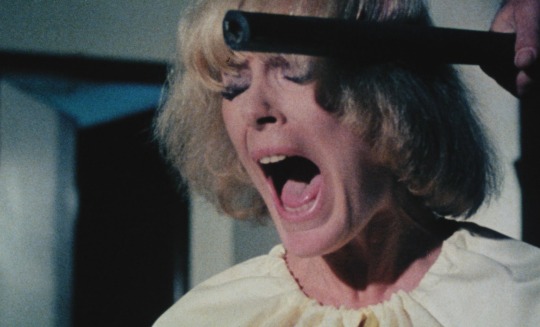
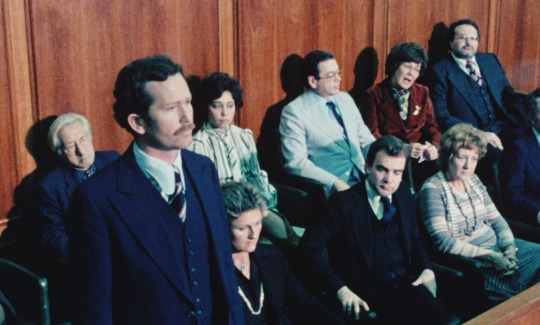


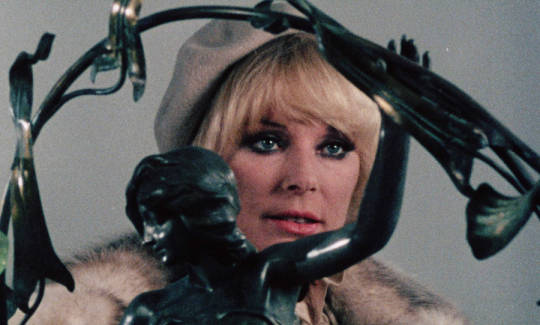


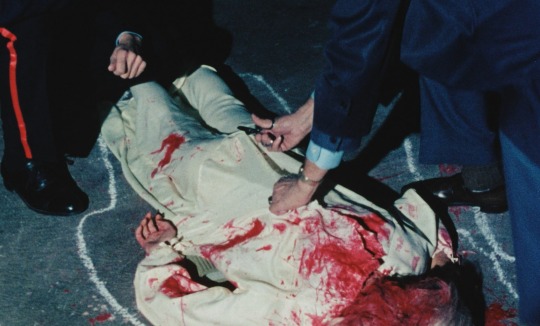
I Miss You, Hugs and Kisses (Drop Dead, Dearest, 1978)
"What is this? What is this? I'm not a suspect, am I?"
"I didn't say that."
"Goddammit, why aren't you doing something? Why aren't you out there looking for the person who did it? Look, look, look. I don't have to be treated in this...this, this manner! I'm not some motorcycle punk you've dragged in off the street! I'm a wealthy man!"
#i miss you hugs and kisses#drop dead dearest#video nasty#blood tw#gore tw#1978#canadian cinema#murray markowitz#elke sommer#donald pilon#chuck shamata#george touliatos#cindy girling#george chuvalo#cec linder#richard m. davidson#migual fernandes#michelle fansett#corinna carlson#linda sorensen#highly atypical entry in the video nasty canon; it's formed more like a tv movie than a horror film‚ a courtroom drama crossed with#a murder mystery (albeit with a couple of minutes of real nastiness‚ which is what landed it on the dpp list). the irony (which is not#unique to this film) is that banning this film ended up giving it a legacy which has kept it alive much longer than it would have otherwise#who'd be seeking out a cheapo canadian killer thriller with a cast of minor b listers if it wasn't immortalised on a list of brain frying#gore flicks? well.. I might have? maybe. idk. but i mainly watched this bc of the video nasty thing and i gotta say it certainly isn't the#worst from the list I've seen. the format is interesting‚ opening on the central murder and then drifting back and forth between the events#leading up to it and the trial it resulted in. the plot is based on a true case (the Peter Demeter case; he's still in Canadian prison but#was presumably p happy with his nuanced portrayal here‚ if he ever saw the film). more melodrama than horror‚ except for those few scenes#of excessive sex and violence. remove those (and they'd be easily trimmed) and this is basically afternoon tv fodder
4 notes
·
View notes
Text
Prom Night (1980)
In today's review, I find drama and murder clash with the most important night of a seniors life. As I attempt a #positive review of the 1980 slasher Prom Night
#LeslieNielsen
#JamieLeeCurtis
#DebbieGreenfield
#CaseyStevens
#BrockSimpson
#EddieBenton
Childhood can be challenging on its own, yet if you can survive the perils of youthful naïvety, you get a dose of the drama and danger that is present in your adult years. These scars, and traumas can stick with of, moulding us into the people that we are today, if we make it out that is. In 1980, as the slashers started to pick up steam, a high school in Canada dealt with a buried secret, and a…

View On WordPress
#1980#Antoinette Bower#Brock Simpson#Casey Stevens#David Bolt#David Gardner#David Mucci#Dean Bosacki#Debbie Greenfield#Eddie Benton#film#films#George Touliatos#horror#Jamie Lee Curtis#Jeff Wincott#Joy Thompson#Joyce Kite#Karen Forbes#Leslie Nielsen#Leslie Scott#Mary Beth Rubens#Melanie Morse#Michael Tough#Movies#Pita Oliver#positive#review#Robert A. Silverman#Sheldon Rybowski
0 notes
Photo

Bad movie I have Avenging Angelo 2002
#Avenging Angelo#Dante Entertainment#Sylvester Stallone#Madeleine Stowe#Anthony Quinn#Raoul Bova#Harry Van Gorkum#Billy Gardell#George Touliatos#Angelo Celeste#Ezra Perlman#Carin Moffat#John Gilbert#Dawn Greenhalgh#Angelo Tsarouchas#Nancy Beatty#Lori Alter#Kristina Nicoll#Gino Marrocco#Francesco Zimone#Brandon Carrera#Sandra Biondi#Gema Zamprogna#Olivia Jones#Katie Evans#Julie Jones#Curtis Sullivan#Laird Mackintosh#Luciana Calvet#Kevin Law
1 note
·
View note
Text




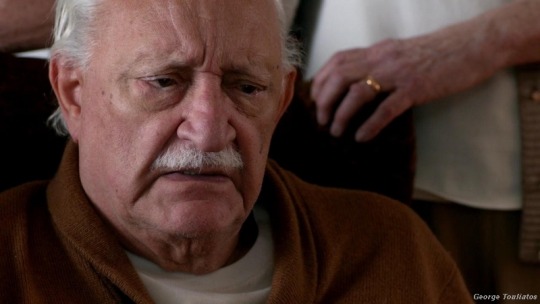


Stargate Birthdays - December 9th
Beau Bridges - General Hank Landry (SG1 & SGA)
Reiko Aylesworth - Sharon Walker (SGU)
Sebastian Spence - Delek (SG1)
Patti Allan - Mrs Kinsey (SG1)
Jeff Plecas - Key Grip (SG1)
Patrick Janicke - Set Designer (Movie)
In Memory Of:
George Touliatos (December 9th 1929 -December 8th 2017) - Pyrus & Shamda (SG1)
3 notes
·
View notes
Photo

Tom Hardy, Reese Witherspoon, and Chris Pine in This Means War (McG, 2012)
Cast: Reese Witherspoon, Chris Pine, Tom Hardy, Til Schweiger, Chelsea Handler, John Paul Ruttan, Abigail Spencer, Angela Bassett, Rosemary Harris, George Touliatos. Screenplay: Timothy Dowling, Simon Kinberg, Marcus Gautesen. Cinematography: Russell Carpenter. Production design: Martin Laing. Film editing: Nicolas De Toth. Music: Christoph Beck.
Professionalism consists of doing your best even when the task assigned to you isn't worthy of your talents. This Means War certifies the professionalism of Tom Hardy, Chris Pine, and Reese Witherspoon, who do every absurd thing and speak every inane line that they're given as if the project warranted their full commitment. The experience of making the film caused Hardy to vow that he'll never do another rom-com, and it's likely that Pine and Witherspoon don't highlight the movie on their résumés. The film is, in short, a terrible mess, a mashup of action movie and sex farce, almost unwatchable except for the sheer charisma of its three principles. Its chief virtue, aside from the handsome performers, is that it's short: only 97 minutes, after being reduced from a director's cut of 107 minutes. This reduction seems to have jettisoned the backstory about the bad guys who put the three leads in jeopardy, making the film less coherent but probably more tolerable. Once upon a time, the presence of Hardy, Pine, and Witherspoon -- as well as such skilled performers as Angela Bassett and Rosemary Harris in barely there supporting roles -- would have been easy to explain: Under the studio system, stars were obligated by their contracts to do what they were handed. But that system vanished half a century ago, and nothing can justify wasting the time and talent of actors like these on This Means War.
1 note
·
View note
Photo


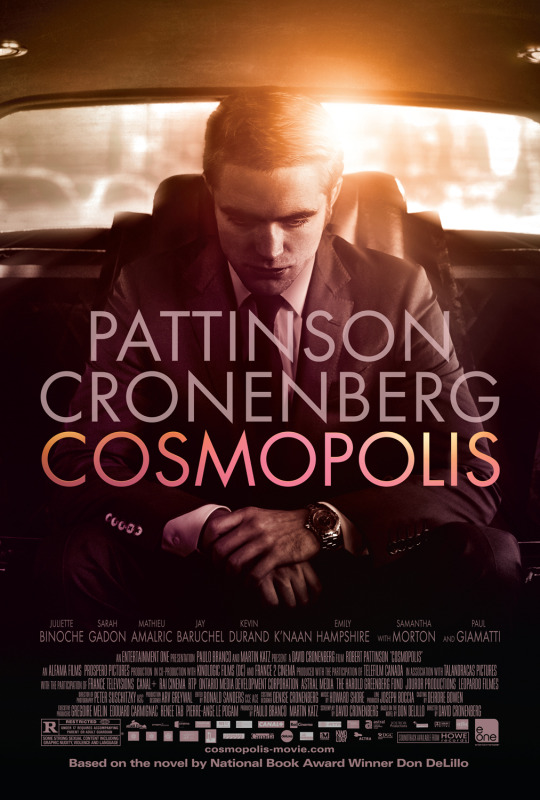
Cosmopolis (2012) David Cronenberg
January 25th 2020
#cosmopolis#david cronenberg#robert pattinson#kevin durand#sarah gadon#paul giamatti#samantha morton#emily hampshire#juliette binoche#george touliatos#abdul ayoola
46 notes
·
View notes
Photo

Vauhtihurjat vuonna 2015 / Firebird 2015 AD (1981) Gerit Oy / Scand-Video Ab https://www.videospace.fi/release/vauhtihurjat_vuonna_2015_nauha_gerit_oy_scandvideo_ab_finland
#Videospace#nauha#Vauhtihurjat vuonna 2015#Firebird 2015 AD#David M. Robertson#Darren McGavin#Doug McClure#George Touliatos#VHS tapes#VHS art#VHS cover
2 notes
·
View notes
Photo




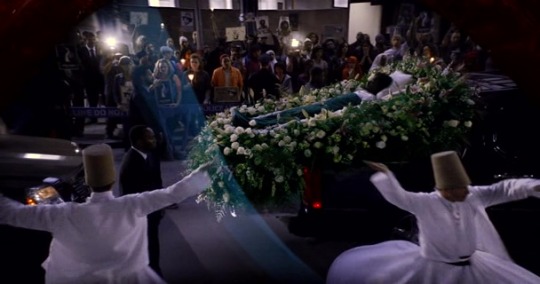
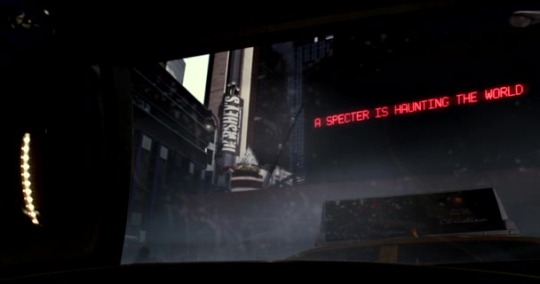




Cosmopolis (2012) Director - David Cronenberg, Cinematography - Peter Suschitzky "What is the flaw of human rationality? It pretends not to see the horror and death at the end of the schemes it builds. This is a protest against the future. They won't hold off the future. They want to normalize it, keep it from overwhelming the present. The future is always a wholeness, a sameness, we're all tall and happy there. This is why the future fails. It can never be the cool and happy place we want to make it."
#scenesandscreens#cosmopolis#david cronenberg#robert pattinson#sarah gadon#paul giamatti#Kevin Durand#juliette binoche#Abdul Ayoola#Emily Hampshire#samantha morton#Bob Bainborough#jay baruchel#Zeljko Kecojevic#Philip Nozuka#Mathieu Amalric#Patricia McKenzie#George Touliatos#K'Naan
105 notes
·
View notes
Photo




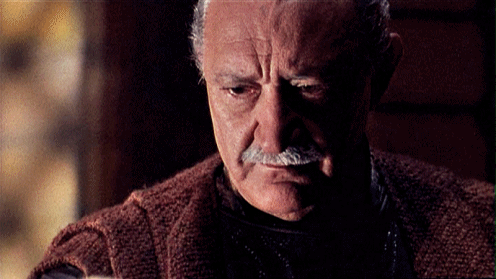


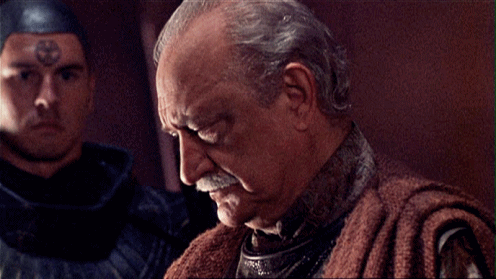

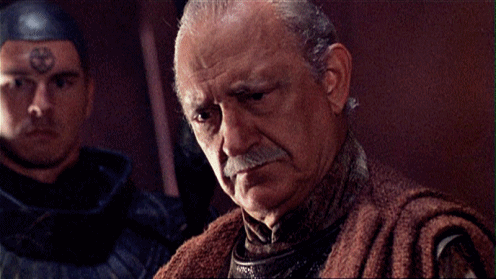
Where are you from? in Need.
#pyrus the godslayer#george touliatos#samantha carter#amanda tapping#jack o'neill#richard dean anderson#stargate sg-1#sg1#i made this#sg1: need#i don't like it when creepy aliens touch sam
18 notes
·
View notes
Photo
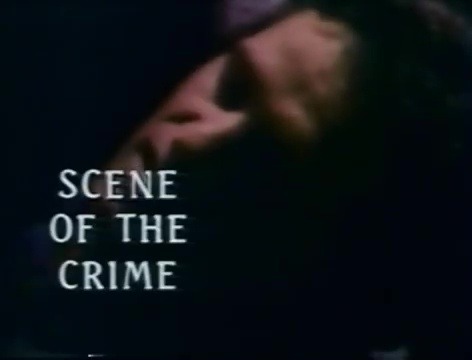
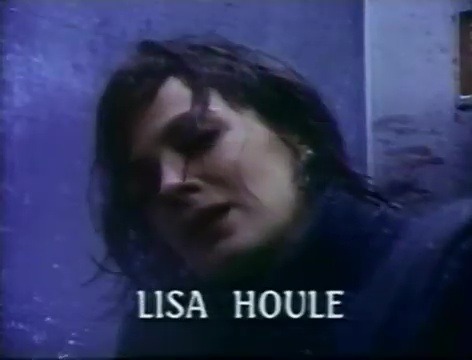
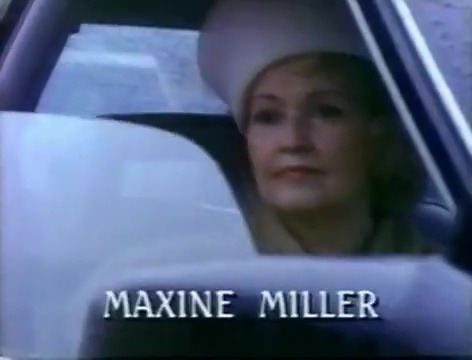


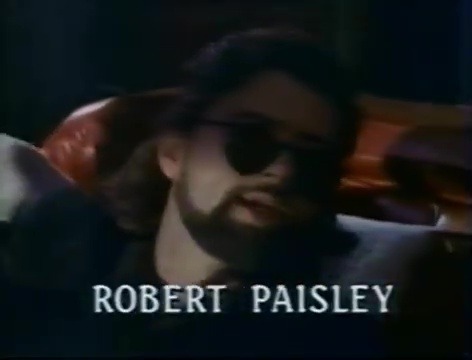


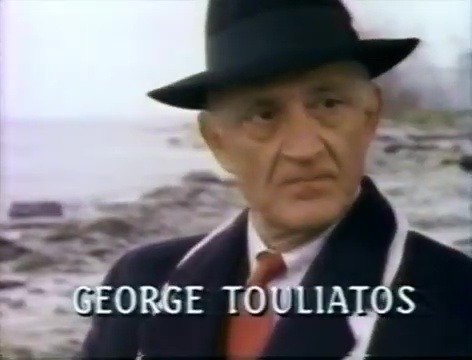

Scene of the Crime - CBS - April 3, 1991 - March 4, 1992
Mystery Anthology (22 episodes)
Running Time: 60 minutes
Hosted by Stephen J. Cannell
Stars: (Repertory company)
Teri Austin
Kim Coates (season 1)
Lisa Houle
Stephen McHattie
Maxine Miller
Francois Montagut
Sandra Nelson
Robert Paisley
Barbara Parkins (season 1)
Olivier Pierre
George Touliatos
2 notes
·
View notes
Text
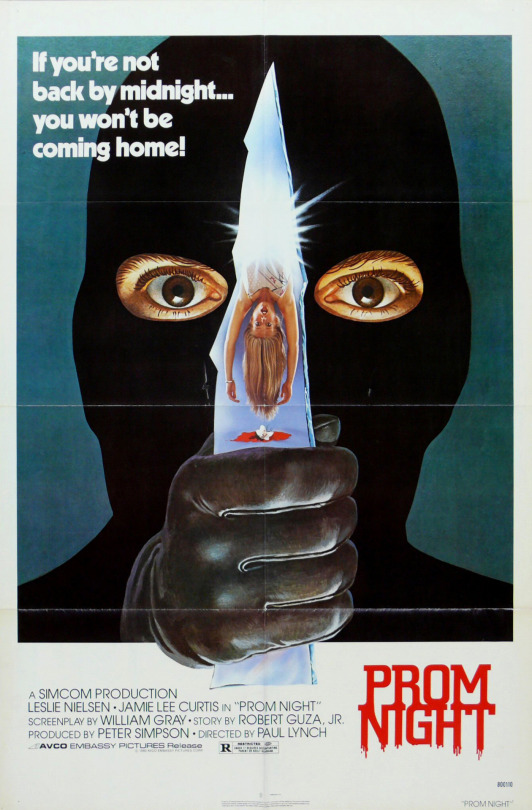

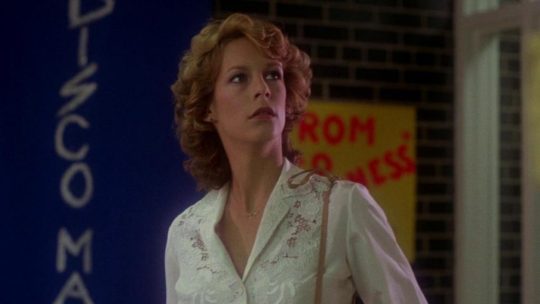







Prom Night (1980)
"You seem a little anxious, Wendy. By the way, who are you going with tonight?"
"It's not who you go with, honey. It's who takes you home."
#prom night#horror film#Close up of eyes#canadian cinema#films i done watched#Paul lynch#Jamie Lee Curtis#leslie nielsen#Casey Stevens#Michael Tough#Antoinette Bower#Anne Marie Martin#Robert A. Silverman#Pita Oliver#David Mucci#Jeff Wincott#Mary Beth Rubens#George Touliatos#Joy Thompson#David Gardner#Melanie Morse MacQuarrie#William Gray#Robert Guza Jr.#Sheldon Rybowski#An OG slasher that I haven't seen before! And boy what an imprint this one left; sure it picks up some ideas from Carrie and Halloween but#It clearly had a big influence on a lot of slashers that followed. That can be the problem with watching these films; I've seen so many#Imitators and parodies that it takes a little of the shine off these films when they're finally seen. Still this is a pretty great entry in#The pantheon and there's a lot to enjoy: a slow steady build up with realistic characters in relatable situations gives way to some very#Tense stalk and slash. Some beautiful editing work and a great score (not to mention beautifully demented choreographed disco dance scene)#Make up for the fact that the identity of the killer is obvious from a mile away. Curtis is brilliant tho; true scream queen icon
33 notes
·
View notes
Link
I love all incarnations of TZ but the J. Michael Straczynski season is my favourite. I started a rewatch on Oct 29th, 2008, and finished it tonight with this very good Ed Marinaro episode.
I like Marinaro in anything and he’s really good here. It’s a smart story, too, with an interesting point to make. Exactly what a good TZ episode should be.
I’ve always wished Straczynski had been story editor on another 30 of these.
0 notes
Photo


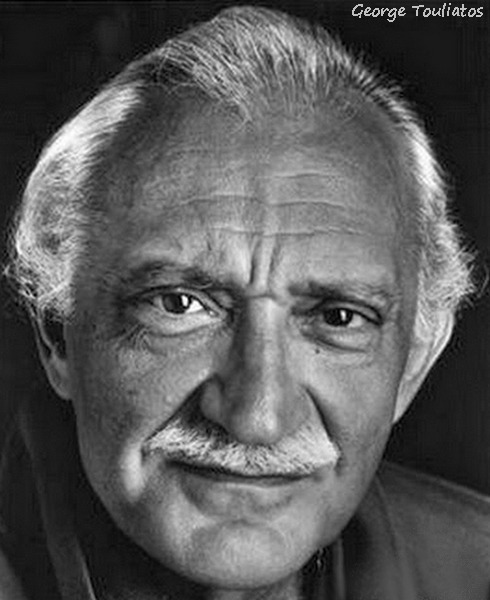




Stargate Birthdays - December 9th
Beau Bridges - General Hank Landry (SG1 & SGA)
Reiko Aylesworth - Sharon Walker (SGU)
Sebastian Spence - Delek (SG1)
Patti Allan - Mrs Kinsey (SG1)
Jeff Plecas - Key Grip (SG1)
Patrick Janicke - Set Designer (Movie)
In Memory Of:
George Touliatos (December 9th 1929 -December 8th 2017) - Pyrus & Shamda (SG1)
5 notes
·
View notes
Text
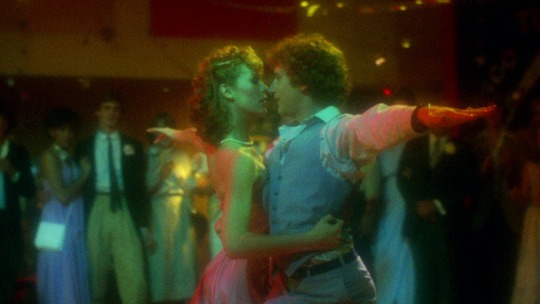
Jamie Lee Curtis and Casey Stevens in Prom Night (Paul Lynch, 1980)
Cast: Leslie Nielsen, Jamie Lee Curtis, Casey Stevens, Anne-Marie Martin, Michael Tough, Mary Beth Rubens, Joy Thompson, Antoinette Bower, Robert A. Silverman, Pita Oliver, David Mucci, George Touliatos, Sheldon Rybowski, Debbie Greenfield, Brock Simpson, Leslie Scott, Dean Bosacki, Joyce Kite, Karen Forbes. Screenplay: William Gray, Robert Guza Jr. Cinematography: Robert C. New. Art direction: Reuben Freed. Film editing: Brian Ravok. Music: Paul Zaza, Carl Zittrer.
High school prom is scary enough without letting a killer loose at one: It's a nexus of adolescent anxieties about sex, style, and status. But of course that makes it a natural locus for the overkill of a horror movie like the classic Carrie (Brian De Palma, 1976). It would be nice to say that Paul Lynch's Prom Night is a classic of that order, but I really can't. It has a promising setup: A group of grade-school kids terrifies another kid into a fatal fall from the window of a spooky old building and, led by the snottiest girl in the group, cover up the fact that they witnessed and partly caused the accident. Six years later, they become the target for threatening phone calls, threats planted in their school lockers, and eventual murders at the prom. The identity of the murderer is slyly withheld until the very end -- although if you've seen enough of these movies you know how to eliminate the obvious suspects and maybe to catch the clues to whodunit. There are a couple of well-staged and suspenseful scenes as the victims get offed. But the film is loaded with too many dance-floor scenes that remind one of how nobody mourned when disco died. The top billing for the film goes to Leslie Nielsen, who plays the principal of the school and the father of the little girl who died, as well as her siblings Kim (Jamie Lee Curtis) and Alex (Michael Tough). But Nielsen has only a few scenes in the movie, and the role is a kind of valedictory to his career in "serious" parts: Airplane! (David Zucker, Jerry Zucker) came out the same year as Prom Night and launched him into the most memorable part of his career, as a deadpan comic actor. Though it was a big success in its day, Prom Night is more artifact than art, valuable mostly as a picture of its era.
1 note
·
View note
Text
Elaine Hatfield et al., A brief history of social scientists’ attempts to measure passionate love, 29 J Soc & Pers Relationships 143 (2012)
Abstract
The concept of passionate love has a long history, yet it was not until the 1940s that social scientists created tools designed to measure this emotion. Over the next 60 years, numerous scales of romantic and passionate love were created and tested. Currently, however, there exists no single compendium of existing scales. This paper attempts to fill in the missing information on existing love scales by providing a list of 33 different measures and indicating where each scale’s reliability and validity information can be found. We close by attempting to explain how scholars’ conceptions of the nature of love have changed over the years, and how these historical and scientific changes are reflected in the scales designed to measure passionate love.
For more than 5000 years, poets, writers, and troubadours have sung of the delights and sufferings of love and lust. When the Sumerians invented writing around 3500 BCE, one of the first topics they wrote about was passionate love. Buried among the Sumerians’ clay tablets was history’s oldest known love letter – a poem dedicated to King Shu-Sin by one of his chosen brides. She wrote: “Bridegroom, let me caress you. My precious caress is more savory than honey” (Arsu, 2006). Passionate love and sexual desire possess a very long and distinguished lineage.
Beginning in the 1940s, social scientists began crafting ways to measure this emotion (sometimes called passionate love, romantic love, puppy love, deficiency love, being in love versus loving, limerence, and the like). A few of the pioneering measures were casually constructed. They read a bit like the slap-dash “scales” readers confront in Cosmopolitan or Glamour. (Those who constructed the scales provided little or no information as to their theoretical rationale or the scales’ reliability and validity). Most, however, were well conceived and utilized (then) sophisticated psychometric techniques in their construction. What has become of these measures? Alas, many of them have been lost in the mists of time.
Scientists interested in assessing attitudes, personality, emotion, or occupational aptitude and achievement can often turn to yearbooks or handbooks to find a vast collection of potentially relevant scales. Not so with passionate love scales and related constructs. In spite of the intense interest in such measures, strangely enough, no single compendium exists that would allow scholars to sort through and choose among existing scales. True, a few passionate love scales appear in publications such as the Buros’ Mental measurement yearbook (Geisinger, Spies, Carlson, & Plake, 2007), the Handbook of family-measurement techniques (Touliatos, Perlmutter, & Straus, 1990), or the Handbook of sexually related measures (Fisher, Davis, Yaber, & Davis, 2009), but only a few. It is difficult to ferret out these measures. There are several reasons for this. Firstly, it is difficult to find the authors and names of these scales. GoogleScholar allows one to access only a few of these measures. Once we know the scale’s name, it is often difficult to find a reference to the original scale and to secure a copy. We may find dozens of references to studies that have used the scale, but no information as to where one can find the scale itself, much less information as to the scale’s reliability and validity, and critiques of the scale. Descriptions of these scales are usually scattered throughout a number of journals, and published in an array of disciplines (clinical psychology, social psychology, sociology, marriage and family courses, and the like).
In this paper, we will attempt to fill in this missing information. We will (1) provide a list of the authors and names of 33 different measures of passionate love; (2) indicate where a copy of the scales can be found (if indeed published accounts are available); and (3) point the way to sources where the latest information as to the reliability and validity of these measures (as well as serious critiques), can be found. We hope that this list will be useful to researchers who may be interested in the history of love measures, who wish to critique existing measures, who wish to survey existing measures in order to choose the best available measure for their research projects, or who wish to avoid wasting time constructing passionate love measures of their own, when an abundance of perfectly good measures are already available. We will close by pointing out how scholars’ conceptions as to the nature of love have changed over the years, and how these historical and scientific changes are reflected in the scales designed to measure this concept.
Definition of passionate love
For the purposes of this paper, we will define passionate love as follows.
A state of intense longing for union with another.
A complex functional whole including appraisals or appreciations, subjective feelings, expressions, patterned physiological processes, action tendencies, and instrumental behaviors. Reciprocated love (union with the other) is associated with fulfillment and ecstasy; unrequited love (separation) is associated with emptiness, anxiety, or despair (Hatfield & Sprecher, 2010).
Scientists have given many names to this kind of love. For simplicity’s sake, we will label these constructs collectively as “passionate love.” Sex researchers tend to use the terms “passionate love” and “sexual desire” almost interchangeably. This is not surprising given that passionate love is defined as a “longing for union,” while sexual desire can be defined as a “longing for sexual union.”
Collecting scales designed to measure passionate love (1940 to the present)
Method
We first attempted to collect all the measures of passionate love that we could find. In order to do this, we engaged in the following bits of detective work. We first contacted pioneers in love research, as well as scholars who were currently conducting research on romantic attraction, mating, and personal relationships, and asked them for leads. We discovered three scholars who had assembled lists of such scales – George A Parks, University of Washington, who provided a mimeographed copy of “The measurement of love: A bibliography,” which he had constructed in April of 1991 for his graduate class in personal relationships. We also found a text by Oliver CSTzeng (1993) on the Measurement of love and intimate relations and an article by Fehr (1994), both of which contained a few additional scales. Our next step was to personally contact all the scholars who had attempted to construct such scales and ask for information about the construction of their scales and up-to-date information as to their scales’ reliability and validity and any existing critiques with which they were familiar. (Naturally, given the time span of our survey, a number of these psychometricians were deceased, ill, or otherwise unavailable). We also conducted computer searches of the terms “passionate love”, “puppy love,” “romantic love,” “infatuation,” “desperate love,” “obsessive love,” “limerence,” “eros”, “mania,”“being in love,” and so forth, utilizing the PsycINFO database (American Psychological Association, 1967–2010) and MEDLINE (National Library of Medicine, 1966–2010) and search engines such as Google, GoogleScholar, Safari, Explorer, and Netscape. In the end, we were able to identify 72 potential measures.
We then read the original articles introducing the scale, studies by scholars who had utilized the scales in research, critics of the various scales’ methodology, and supplementary publications dealing with these measures. This allowed us to narrow our list of measures to those that actually attempted to measure attitudes toward passionate love or the cognitive, emotional, or behavioral indicants of such love and the intensity of that love, rather than some related construct (such as companionate love, liking, intimacy, or relationship stability). Finally, we constructed a list of these measures, and wrote to the original authors, their collaborators, critics, and secondary users of the scale, asking the following.
Do you know the name of any measures of the various kinds of romantic love that we have omitted from our list?
Have we used the appropriate name for your love scale? (Scholars often used slightly different names at different times.)
Where can we find the latest published version(s) of your love scale? (Please indicate cost if applicable.)
Have we correctly described what YOU hoped to measure with this love scale?
Where can scholars find up-to-date information on the reliability and validity of this scale? We would be especially interested in any critiques of this scale with which you are familiar.
When all was said and done, we were able to identify 33 scales that assessed the kinds of people who tend to be most susceptible to love, attitudes toward passionate love, or the cognitive, emotional, and behavioral characteristics associated with this form of love and/or the intensity of love. Surely more exist, but we have been unable to find them.
The pioneer in attempting to assess attitudes toward romantic love was Llewellyn Gross (1944), a University of Buffalo sociologist. In an attempt to discover a Romantic Cultural Pattern in visions of love, Gross sorted through articles written by sociologists, attended movies, collected popular songs, and listened to radio “soap operas,” and other cultural artifacts. Even by today’s strict standards, Gross’s work is quite sophisticated psychometrically; his scale was artfully and rigorously constructed. He began with 240 statements expressing either a Romantic or Realistic sentiment. After a great deal of pretesting, he whittled these items down to an 80-item scale, designed to measure a Romantic Cultural Pattern versus its opposite, a Realist Cultural Pattern. The two scales contain such items as (Romanticism) “The impetuous person makes the best kind of sweetheart,” versus (Realism) “It is questionable whether there is any love strong enough to overcome the passing of time.” Respondents were instructed to check those statements with which they agreed. The extent to which college men and women possessed a Romantic view was calculated by summing the number of Romantic items checked minus the number of Realistic items checked. Gross (1944) provided considerable evidence that his scale was indeed a reliable and valid one.
More scales followed.
Scales 1
Llewellyn Gross (1944): Sociology
Attitudes Toward Romanticism Scale
Designed to assess people’s tendency to possess a romantic versus a realistic view of love relationships (80 items).
For information on the scale’s reliability and validity, see Gross (1944; this article contains 16 items of the 80-item scale).
Charles W. Hobart (1958): Sociology
A Romanticism Scale
Hobart attempted to construct a short (12-item) version of the Gross Attitudes Toward Romanticism Scale, with a simplified (Agree or Disagree) scoring system. It measures the extent to which one endorses romantic beliefs such as “To be truly in love is to be in love forever.”
For information on the shorter scales’ reliability and validity, see Hobart (1958; article contains the 12-item scale).
Dwight Dean (1961, 1964): Sociology
Romanticism Scale
Designed to measure the extent to which people think romantic love is of primary importance in a relationship and all other considerations are unimportant. Consists of a 16-item scale gauging attitudes toward romantic love, a six-item scale of emotions and feelings associated with love, and a 21-item scale assessing subjective experiences when in love.
For information on the scale’s reliability and validity, see Dean (1961 (the 32-item in the Romanticism scale did not appear in this article),1964) and Spanier (1972; the 32-item Dean Romanticism Scale is not included in this paper).
Clifford H. Swensen (1961); revised scale: C. H. Swensen, M. Killlough, J. W. Nelson, & D. Dunlap (1992): Psychology
The Scale of Feelings and Behavior of Love
Designed to identify the patterns of behavior and feelings people exhibit and experience in their love relationships. Among the things assessed are the verbal, material, and physical expressions of love; shared values, outlooks, and activities; and self-disclosure; considerateness and a willingness to forgive flaws (383 items).
For information on the scale’s ity, see Swensen (1961 (contains only a few sample items of the 383 item scale), 1990 (describes the history of the scale and contains a few of the revised 120-item scale items), Swensen and Gilner (1964) and Swensen et al. (1992; contains the 383-item revised scale) (for a critique of this measure, see Swensen and Fuller, 1992).
Ira L. Reiss (1964a, b, 1967): Sociology
The Reiss Romantic Love Scale
Designed to measure beliefs concerning the nature of romantic love. Allows one to assess the relationship between love and sexual permissiveness (12 items).
For information on the scale’s reliability and validity, see Reiss (1967 (the scale is discussed on pp. 45–53 and pp. 78–81, while the eight-item love scale appears on p. 77), 1976).
Ronald P. Hattis (1965): Medicine and public health
Hattis Love Scale
Designed to measure people’s feelings of love. It measures six components of love – pride in partner, warm feelings for a partner, erotic feelings for partner, a desire for love in return, feelings of closeness and intimacy, including even occasional feelings of hostility (24 items).
For information on the scale’s reliability and validity, see Hattis (1965; this article contains the 24-item scale) or Pam, Plutchik, and Conte (1975).
Everett L. Shostrom (1966, 1970): Clinical and humanistic psychology
Pair Attraction Inventory and the Caring Relationships Inventory
The Pair Attraction Inventory (PAI) is designed to measure men and women’s attitudes and feelings toward their partners and their relationship. The Caring Relationships Inventory (CRI) is designed to measure five elements of love – affection, friendship, eros, empathy, and self-love (83 items).
For information on the scale’s reliability and validity, see Shostrom (1980a,b; the 83-item CRI and the 224-item PAI are available from EdITS, P. O. Box 7234, San Diego, CA) (for a critique of this measure, see Shostrom, 1972).
William M. Kephart (1967): Sociology
Romantic Love Scale
Designed to measure characteristics of romantic love – cultural status, mysticism, love at first sight, cardiac-respiratory love, complete involvement and exclusiveness, daydreaming, jealousy, centrality and urgency.
For information on the scale’s reliability and validity, see Kephart (1967, 1973; scale available from author).
David H. Knox and Michael J. Sporakowski (1968): Sociology
A Love Attitudes Inventory
Designed to measure romantic versus conjugal love, they argue that romantic love is characterized by excitement, arousal, and urgency (original scale 85 items; revision 30 items).
For information on the scale’s reliability and validity, see Fehr (1994), Knox (1970, 1971; presents the entire 30-item scale) and Knox and Sporakowski (1968; contains 29 of the original 85-item Attitudes Toward Love scale).
E. J. Kanin, K. R. Davidson, & S. R. Scheck (1970)
Love Reactions Measure
Designed to measure the extent to which lovers experience intense passionate reactions when in love (8 items).
For information on the scale’s reliability and validity, see Fehr (1994).
Zick Rubin (1970): Psychology and law
Love and Liking Scales
Designed to measure romantic love and liking.
The scale is designed to measure three components of romantic love: affiliative and dependent needs, a predisposition to help, and an orientation of exclusiveness and absorption. The Love scale possesses a few items designed to assess romantic love, but is generally it is considered to be primarily a measure of companionate love (12 items).
For information on the scale’s reliability and validity, see Fehr (1994) andGraham and Christiansen (2009) (for a critique of this measure, see Hendrick & Hendrick, 1986; Kelley, 1983).
Charles B. Spaulding (1970): Sociology
Romantic Love Complex
Designed to measure beliefs about love (11 items, four of which overlap with Hobart’s scale). For information on the reliability and validity of this measure see Fehr (1994) and Spaulding (1970).
Karen K. Dion and Kenneth L. Dion (1973): Psychology
Romantic Love Questionnaire
Designed to measure several parameters of romantic love: (1) people’s attitudes toward romantic love; (2) their subjective emotional experiences when in love; and (3) the frequency, duration, and intensity of their romantic experiences (consists of a 16-item scale gauging attitudes toward romantic love, a six-item scale of emotions and feelings associated with love, and a 21-item scale assessing respondents’ subjective experiences when in love).
For information on the scale’s reliability and validity, see Dion and Dion (1973, 1975) and Fehr (1994) (for a critique of this measure, see Hendrick & Hendrick, 1989).
Panos D. Bardis (1974, 1978): Sociology
Erotometer and Orpheus-Eurydice, Zeus, Penelope Typology
Designed to measure attitudes toward heterosexual love (50 items).
For information on the scale’s reliability and validity, see Bardis (1974,1978).
Alfred P. Fengler (1974): Sociology
Romantic Idealism
Deigned to assess romantic idealism versus realism (six items). For information on the scale’s reliability and validity, see Fehr (1994) and Fengler (1974).
John Alan Lee (1974): Sociology
The Styles of Loving Scale
Designed to measure eight possible love styles: eros, ludis, storge, mania, ludic eros, storgic eros, storgic ludis, or pragma (35 items).
For information on the scale’s reliability and validity, see Lee (1974; this article contains the 35-item Styles of Love Scale).
Thomas E. Lasswell and Marcia E. Lasswell (1976): Sociology and psychology
The SAMPLE Profile
For a later, more popular version see Lasswell and Lobsenz (1980).
This profile is so named for the initial letter of six scales. Based on John Lee’s (1973) earlier scale, the authors attempted to isolate six distinct concepts of love: storge, agape, mania, pragma, ludis, and eros (53 items).
For information on the scale’s reliability and validity, see Lasswell and Lasswell (1976; the 53-item Profiles of Personal Concepts of Loving scale is included in this article) and Lasswell and Lobsenz (1980).
Brenda E. Munro and Gerald R. Adams (1978a, b): Sociology
Love Attitudes Scale
This scale is comprised of three subscales: Romantic Power, Romantic Idealist, and a Conjugal-Relational view (26 items.)
For information on the scale’s reliability and validity, see Fehr (1994) and Munro and Adams (1978a, b).
Dorothy Tennov (1979): Psychology
Limerence
Scale designed to assess limerence (or passionate love.)
For reliability and validity information see Tennov (1979). Her “scale” consists entirely of material from books, poetry, plays, and readers’ letters to demonstrate that the many characteristics of limerence (or passionate love), such as idealization, shyness, swings from joy to despair, obsessive thinking, and fear of rejection, are cultural universals (for a critique of this measure, see Reynolds, 1983).
Harold Bessell (1981): Clinical psychology and sex therapy
The Romantic Attraction Questionnaire
Designed to measure romantic chemistry (60 items.)
For information on the scale’s reliability and validity, see Bessell (1981). Scales are available in Bessell and Hurlburt (2004; for a critique of this measure, see Reynolds, 1983).
Eugene W. Mathes (1982): Psychology
The Romantic Love Symptom Checklist
Designed to measure the extent to which men and women display the feelings that are elicited by thoughts of their romantic partner (76 items).
For information on the scale’s reliability and validity, see Mathes (1982; the 76-item true or false measure is available from author) and Mathes and Severa (1981).
David H. Olson, D. G. Fournier, and J. M. Druckman (1985): Family social psychology
PREPARE-ENRICH Program—Enriching and nurturing relationship issues, communication, and happiness
This scale is designed as a diagnostic tool for couples see king marriage counseling. It is designed to assess three aspects of love relationships – personal issues, interpersonal issues, and external issues. A number of items measure constructs related to passionate love (12 categories and 125 items).
For information on the scale’s reliability and validity, see Tzeng (1993) and Life Innovations: www.prepare-enrich.com (for a critique of this measure, see Bowling, Hill, and Jencius, 2005).
Michael B. Sperling (1985): Psychology
Desperate Love Scale
Designed to measure the extent to which men and women are susceptible to desperate love, which is said to be characterized by narcissism, idealization, neediness, anxious attachment, diffuse interpersonal boundaries, and an insatiable desire for love (eight items).
For information on the scale’s reliability and validity, see Sperling (1985; questionnaire available from author).
Elaine Hatfield and Susan Sprecher (1986): Psychology and sociology
Passionate Love Scale
Designed to assess the cognitive, physiological, and behavioral indicants of passionate love (the scale comes in two parallel versions – a 15-item and a 30-item scale).
For information on the scale’s reliability and validity, see Fehr (1994), Graham and Christiansen (2009) and Hatfield and Sprecher (2010). [See The Most Popular Scales for more details.] (For a critique of this measure, see Fehr, 1994, Hendrick & Hendrick, 1989; Landis & O’Shea, 2000.)
Clyde Hendrick and Susan Hendrick (1986; Hendrick, Hendrick, & Dicke, 1998): Psychology
Love Attitudes Scale and the Love Attitudes Scale: Short Form
Designed to measure six types of love – eros, ludus, storge, pragma, mania, and agape. Two types of love (eros and mania) see m most closely related to passionate love (the eros and mania measures consist of four items each; the entire questionnaire consists of 24 items).
For information on the scale’s reliability and validity, see Graham and Christiansen (2009) and Hendrick and Hendrick (1986 (original version of the scale – article contains the 42-item Love Attitudes Scale), 1989). [See The Most Popular Scales for more details.]
Keith E. Davis and H. Latty-Mann (1987; Davis, 2001): Psychology
The Relationship Rating Form: A measure of the characteristics of romantic relationships and friendships
Designed to measure seven global characteristics (viability, intimacy, passion, care, global satisfaction, commitment, and conflict/ambivalence) and 20 facets of romantic relationships and friendships. One factor (passion) see ms most related to passionate love (there is a brief 16-item version and an original 68-item version).
For information on the scale’s reliability and validity, see Davis (2001) and Davis and Latty-Mann (1987). The original 68-item scale and the newer, brief 16-item version are available on the author’s University of South Carolina webpage and via http://people.cas.sc.edu/daviske/LoveFriendsMeasure_rrf.pdf (for a critique of this measure, see Hendrick & Hendrick, 1989).
Cindy Hazan and Phillip Shaver (1987): Developmental psychology
General Relationship Attitudes
Designed to assess three types of romantic attachments: avoidant, anxious-ambivalent, and secure attachments. Although technically the General Relationship Attitudes (GRA) is a precursor of passionate love (and not a measure of passionate love), two love styles (anxious-attachment and secure love styles) see m closely linked to passionate love.
Initially, the three love styles were each assessed via a one-item scale. In response to psychometric critiques, a number of attachment researchers developed a variety of scales to measure the construct. Other scholars have proposed that people possess four, five, or even six attachment styles (see Bartholomew & Horowitz, 1991; Charania & Ickes, 2007; Hatfield & Rapson, 2005, 2010; Hazan & Shaver, 1987; Latty-Mann & Davis, 1996 for a description of these various perspectives – all based on the original Hazan and Shaver work). In an attempt to reconcile these differences, Brennan, Clark, and Shaver (1998) conducted a large-sample factor-analytic study in which all known self-report measures were included in a single analysis. The authors found 12 specific-construct factors that, when factored, formed two more global factors – 45-degree rotations of the dimensions of Anxiety and Avoidance. Currently, the authors recommend that researchers use the Brennan et al. (1998) 36-item measures or (if preferred) one of the other two-dimensional measures constructed by Collins and Read (1990, 1994), Feeney, Noller, and Hanrahan, (1994), Fraley and Waller (1998), Fraley, Waller, and Brennan (2000), and Simpson, and Rholes (1998) (see Brennan et al., 1998). See http://internal.psychology.illinois.edu/∽rcfraley/measures/measures.html for a discussion of these alternate measures of the original Hazan and Shaver (1987) construct.
Regardless of the version of the scales used, over the decades, scholars have discovered that – in a wide variety of cultures and ethnic groups, and among people of different ages and sexual orientations – people’s attachment styles have been found to have a profound impact on men’s and women’s romantic preferences, their comfort when facing serious romantic commitments, the dynamics of romantic and marital relationships, and how they react when romantic and marital relationships fall apart (for a summary of this vast literature, see Hatfield & Rapson, 2009).
For information on the scale’s reliability and validity, see Tzeng (1993).
Susan Sprecher and Sandra Metts (1989): Sociology and communication
Romantic Beliefs Scale
Designed to assess an ideology of romanticism, this scale assesses four beliefs: Love Finds a Way, One and Only, Idealization, and Love at First Sight (15 items).
For information on the scale’s reliability and validity, see Fehr (1994) and Sprecher and Metts (1989; contains the 15-item Romantic Beliefs Scale) (for a critique of this measure, see Weaver & Canong, 2004).
Elaine Hatfield and Richard L. Rapson (1993, 2005): Psychology and history
Love Schemas Scale
Designed to measure six love styles, based on an extension of the Hazan and Shaver model: clingy, secure, skittish, fickle, casual, and uninterested. One type (clingy) see ms most closely related to passionate love (one item in a three-item scale).
For information on the scale’s reliability and validity, see Hatfield and Rapson (2010) (for a critique of this measure, see Stephan & Bachman, 1999).
Arthur Aron and Lori Westbay (1996)
Prototype of Love Scale
Based on the pioneering work of Fehr (1988) and Fehr and Russell (1991), the authors developed a scale designed to measure people’s conceptions of love and the extent to which they experienced passion, intimacy, and commitment in their own relationships (five items assess passion in a 15-item scale).
For information on the scale’s reliability and validity, see Aron and Westbay (1996), Fehr (1988), and Fehr and Russell (1991).
Robert Sternberg (1997): Cognitive psychology
Triangular Theory of Love Scale
Sternberg argues that different kinds of love differ in how much of three different components – passion, intimacy, and decision/commitment to stay together – they possess. Passionate love (which he labels infatuation) involves intense passionate arousal but little intimacy or commitment (15 items of a 45-item scale).
For information on the scale’s reliability and validity, see Graham and Christiansen (2009) and Sternberg (1997). [See The Most Popular Scales for more details.] (For critiques of this measure, see Aron & Westbay, 1996; Hendrick & Hendrick, 1989; Tzeng, 1993.)
Félix Neto and Etienne Mullet (2002): Psychology
The Romantic Acts Questionnaire
Designed to assess the importance attributed to romantic acts (such as kindness, trust, and sexual acts) by Portuguese and Cape Verdean peoples (nine items of a 28-item Romantic Acts Questionnaire).
For information on reliability and validity see Neto and Mullet (2002; article contains the nine-item Romantic Acts Questionnaire) and Neto, Mullet, and Barros (2003).
Helen Fisher (2004): Anthropology and neuroscience
Being in Love: A Questionnaire
Designed to measure infatuation, passionate love, and romantic love (54 items).
For information on the scale’s reliability and validity, see Fisher (2004).
The changing face of passionate love measures
If one reads through the articles containing descriptions of the preceding passionate love scales (in temporal order), several trends jump out.
Interest in passionate love has burgeoned
When Ellen Berscheid and Elaine Hatfield (1969) wrote Interpersonal attraction, the first social psychology textbook to contain a chapter on romantic love, they discovered that almost no social psychological research on passionate love had been conducted. They were forced to speculate about the nature of love with little or no data – and (sadly or happily, depending upon your own point of view) precious little experience of their own to guide them.
What a change has occurred in 40+ years! Today, scholars from a wide variety of theoretical disciplines – anthropologists, clinical psychology, communication studies, developmental psychology, evolutionary psychologists, historians, neurobiologists, neuroscientists, primatologists, social psychologists, and sociologists, among others – are attempting to understand the nature of love. They are employing an impressive array of new techniques. Primatologists are studying primates in the wild and in captivity. Neuroscientists are pouring over functional magnetic resonance images (fMRIs). Historians are now studying history from the “bottom up” rather than the “top down,” generally examining the lives not of kings and queens but of the majority of people. They utilize demographic data (marriage, birth, divorce, and death records), architecture, medical manuals, paintings, church edicts, law cases, songs, and the occasional treasure of a diary that turns up in someone’s attic. Anthropologists go out into the field or track down early ethnographic records. People from a variety of fields now study not just passionate love, but many types of love, commitment, and relationship satisfaction (see Hatfield & Rapson, 1993;Reis, 2009; Reis and Sprecher, 2009).
Passionate love is now assumed to be a universal emotion/motivation
Early sociologists assumed passionate love was a Western phenomenon. As Goode (1959) observed: “The implicit understanding [among sociologists] see ms to be that love as a pattern is found only in the United States” (p. 40). Sociologists possessed a rather dim view of this “Western” phenomenon. Many lamented the fact that young Americans tended to choose life partners on the basis of flimsy, transient emotions, such as romantic love and sexual desire. Generally, these sociologists found wisdom in more traditional societies, where marriage stood on a more solid foundation of community and familial approval.
Hobart (1958) observed:
Sociological interest was first focused on this subject by E. W. Burgess in his classic paper on “The Romantic Impulse and Family Disorganization,” in which he emphasized the dysfunctions of romanticism for the family.
Willard Waller, who stressed the irresponsible pleasure-see king aspects of the rating-dating complex, saw idealization and romanticization as a natural response to blocking of the sex drive. He conceived of unrealistic romantic love as “the anesthetic which renders the amputation of our cherished habits [of “blessed singleness”] painless,” in marriage.
... Parsons see s adolescent romantic love as part of a more general tendency in a youth subculture to behave in unconventional, irresponsible, unrealistic ways... (p. 362).
Looking back, these views appear somewhat provincial and prudish, for today the notion that passionate love is a cultural universal is so embedded in our scholarly consciousness that it see ms almost a part of researchers’ DNA. Evolutionary theorists, such as Barkow, Cosmides, and Tooby (1992) and Buss (1994), argue that a desire for love and sex is instilled in the architecture of the mind – so critical is it to the transmission of one’s genetic heritage to the next generation. Neuroscientists, such as Bartels and Zeki (2000) and Fisher (2004), use the Passionate Love Scale (PLS) (Hatfield & Sprecher, 1986) to identify lovers and search for the brain structures where this universal emotion is lodged.
Anthropologists, too, have begun to document the universality of these “feelings of the heart.” William Jankowiak and Edward Fischer (1992), for example, studied men’s and women’s feelings in a collection of tribal societies. They selected 166 hunting, foraging, and agricultural societies from the Standard Cross-Cultural Sample, which provides comprehensive information on 186 cultures from six distinct geographical regions. In only one of the 166 societies did the resident anthropologist state that there was no evidence of passionate love. The scientists could find no evidence one way or another as to whether or not passionate love existed in 18 of the societies. In 147 of the 166 societies, people showed definite scars from Cupid’s arrows. In all of these far-flung societies, young lovers talked about passionate love, recounted tales of love, sang songs of love and longing, and talked endlessly about the cravings and anguish of infatuation. When the adolescents’ passionate affections clashed with their parents’ or elders’ wishes, sometimes they even eloped. The authors concluded that romantic love may well be a pan-human characteristic. They admitted, however, that there may be cultural variability in how common such heart-pounding, sweaty-palmed feelings are. Historians, for example, have pointed out that religious and political prohibitions against the greatest forms of social subversiveness – individualism, passionate love, and sexual desire – can effectively dampen biologically universal passions (Stone, 1977).
As a consequence, today scholars are busily translating existing measures of passionate love into a variety of languages and administering the scales in a variety of far-flung cultures (Hatfield & Rapson, 2005; Neto et al., 2000). The study of passionate love is no longer in the closet.
Over the decades, definitions of passionate love have broadened and deepened
In the early days, theorists tended to view love from a narrow theoretical perspective. They tended to define love as an attitude OR an emotion OR as a physiological response OR as intimacy see king behavior. In Interpersonal attraction, Berscheid and Hatfield (1969) defined romantic love very narrowly – as a positive attitude toward another – very much like friendship only more intense.
In the 1970s, however, as sociobiological and evolutionary psychology perspectives gained currency, social psychologists came to think of emotions as integrated wholes. As a consequence, conceptions of love began to become increasingly inclusive. The reader may have noticed that the working definition of passionate love we adopted in this paper is broad indeed:
A complex functional whole including appraisals or appreciations, subjective feelings, expressions, patterned physiological processes, action tendencies, and instrumental behaviors.
Scholars from a variety of disciplines now recognize passionate love as of critical importance, and in consequence they have begun to develop and utilize scales designed to measure various aspects of this construct. A look at today’s most popular scales makes it clear that a firm theoretical vision guides scale construction and that the scales are designed to assess cognitive, emotional, and behavioral components of love. They are also designed to assess the personality of lovers and the varieties of love that may exist.
These facts have had a profound impact on the development of modern-day passionate love scales
Sociologists pioneered the development of passionate love scales.
The very first passionate love scales (in the 1940s and 1950s) were conceived by sociologists teaching large marriage and the family classes.
By 1985 change was in the wind. As Hendrick and Hendrick (1986) noted: “During the past decade, love has become respectable as an area for study by psychologists” (p. 392). Scholars were moving from a narrow sociological focus on romantic love as a prelude to marriage (preferably a happy or at least stable marriage) to an interest in understanding the nature of love, in and of itself. As we observed, there is a new emphasis on theory building. What do men and women mean by love? Whom do they love? Why do they love? What is the nature of that love? How intensely do men and women love? What are the behavioral consequences of that love? Currently, scales exist to tap all those interests.
If modern-day scales are to be accepted, they must display more psychometric sophistication.
When we examine the earliest scales, we find that although they attempted to conform to the (then) ideal psychometric standards, modern-day psychometricians would judge them to fall far short of the sophisticated standards now considered the sine qua non of publication. The later scales remedy those defects.
The most popular scales
Today, the most commonly used scales of passionate love measures (see Graham & Christiansen, 2009; Masuda, 2003) are one that assesses people’s attitudes toward love (Hendrick & Hendrick’s Love Attitudes Scale) and two that directly assess people’s feelings of love, in and of itself (Hatfield and Sprecher’s PLS and Sternberg’s Triangular Love Scale).
Attitudes toward love
Love Attitudes Scale
John Alan Lee (1973) proposed that when men and women think of “love,” they might be thinking of characteristics of any of six types of love: Mania (possessive, dependent love), Eros (passionate love), Pragma (logical, “shopping list” love), Storge (friendship love), Ludus (game-playing love), or Agape (all-giving, selfless love) (both Pragma and Storge sound a bit like companionate love; both Eros and Mania sound a bit like passionate love). In 1986, Clyde Hendrick and Susan Hendrick developed a carefully crafted a 42-item scale to tap these six varieties of love. Eros, for example, contains such items as “My partner and I were attracted to each other immediately after we first met.” Possible responses range from 1 = strongly agree to 5 = strongly disagree.
In the decades since the introduction of the scale, Hendrick and Hendrick and their colleagues have collected a great deal of evidence that the Love Attitudes Scale (or Love Styles Scale) is indeed a reliable and valid scale (see Hendrick & Hendrick, 1986, 1989, 1990 (a new revision of the scale);Hendrick et al., 1998). A brief version of scale was developed, the Love Attitudes Scale: Short Form (Hendrick et al., 1998). This 24-item scale has strong psychometric properties and appears to measure the six varieties of love as well as does the longer version.
Over the years, scholars have begun to use the scale as both a measure of people’s attitudes toward love and a measure of their experience in love.
The emotion of passionate love
Triangular Theory of Love Scale
Robert Sternberg (1988) outlined a triangular model of love. He argued that different kinds of love differ in the extent to which they contain the three basic ingredients of love – passion, intimacy, and the decision and commitment to stay together (see Figure 1).

Figure 1. The Triangular Model of Love. Sternberg (1988), p. 122.
As you can see from Figure 1, three kinds of love each offer just one main asset: Passionate love (which Sternberg labeled “infatuation”), which thrives on passion (but promises little commitment or intimacy). Empty love involves the decision to stay committed, but little else. Liking provides intimacy alone. On the other hand, other kinds of love provide more than one asset. Companionate love offers more. It may be lacking in passion, but it provides a great deal of intimacy and commitment. Romantic Love provides both intimacy and passion. Fatuous love involves passion and commitment. Consummate love is the most complete form of love. It has it all: passion, intimacy, and commitment.
The Triangular Theory of Love Scale (TLS) consists of 45 items designed to assess the three components: passion, intimacy, and commitment. It consists of statements such as “Just see ing ____ excites me,” and “I find myself thinking about ___ during the day.” Possible answers are indicated on a nine-point unidirectional Likert scale, ranging from 1 = “Not at all,” to 9 = “Extremely.”
A great deal of evidence exists to indicate that the TLS is a fine predictor of people’s romantic attitudes, emotions, and behavior. For information on the reliability and validity of this scale, see Sternberg (1997) or Tzeng (1993). For a critique of the Sternberg scales, see Aron and Westbay (1996).
The Passionate Love Scale
The PLS was designed to assess the cognitive, physiological, and behavioral indicants of passionate love (Hatfield & Sprecher, 1986). The cognitive components consist of (1) intrusive thinking or preoccupation with the partner; (2) idealization of the other or of the relationship; (3) desire to know the other and be known by him/her. Emotional components consist of (1) attraction to the partner, especially sexual attraction; (2) positive feelings when things go well; (3) negative feelings when things go awry; (4) longing for reciprocity – passionate lovers not only love, but they want to be loved in return; (5) desire for complete and permanent union; and (6) physiological (sexual) arousal. Finally, behavioral components consist of (1) actions aimed at determining the other’s feelings; (2) studying the other person; (3) service to the other; and (4) maintaining physical closeness. The most common form of the PLS is a 15-item scale, but an alternative 15-item version (consisting of parallel but different items) is also available. The two scales can be combined to form a 30-item scale.
Participants are presented with statements such as: “I would feel deep despair if ____ left me” and are asked to indicate how true the statement is of them. Possible responses range from 1 = not at all true; to 9 = definitely true.
The PLS has been administered to children (via a children’s version of the PLS (Hatfield & Young, 2010), adolescents, and adults in a variety of cultures and countries, such as France, Germany, India, Indonesia, Iran, Italy, Japan, Korea, Peru, Poland, Spain, Sweden, and Switzerland, and has been translated into more than a dozen languages. In recent fMRI studies of brain activity, the PLS has been found to correlate well with certain well-defined patterns of neural activation. For example, Aron et al. (2005) discovered that PLS scores correlated well with activation in a region of the caudate associated with reward (see Bartels & Zeki, 2000, 2004 and Hatfield & Rapson, 2009, for a review of recent neuroscience research correlating the PLS with participants’ fMRI reactions). The PLS has also been found to be highly correlated with a variety of scales and measures of love, intimacy, and sexuality (see Graham & Christiansen, 2009; Hatfield & Sprecher, 2010; Hatfield & Young, 2010; Masuda, 2003, for information on the reliability and validity of both the JLS and the PLS measures.)
Conclusion
In this paper we presented information on 33 scales that have been devised to measure the construct of passionate love and its close cousins, “puppy love,” “romantic love,” “infatuation,” “desperate love,” “obsessive love,” “limerence,” “eros”, “mania,” “being in love,” and the like. We spent some time reviewing how scholars’ visions of passionate love and the scales needed to measure this construct have changed over time. Firstly, interest in passionate love has burgeoned. The social sciences once considered love to be a taboo subject. Now, scholars from a variety of disciplines – anthropologists, clinical psychology, communication studies, developmental psychology, evolutionary psychologists, historians, neurobiologists, neuroscientists, primatologists, social psychologists, and sociologists, among others – are investigating the antecedents and consequences of such love. Currently, there are a plethora of scholarly journals devoted to this topic. Passionate love is now assumed to be not a Western social construction but a universal emotion/motivation. Over the decades, definitions of passionate love have broadened and deepened. Once, theorists tended to view love from a narrow theoretical perspective. Now, most theorists assume love to be a multi-faceted phenomenon.
References
Aron, A., Fisher, H. E., Mashek, D. J., Strong, G., Li, H.-F., & Brown, L. L. (2005). Reward, motivation, and emotion systems associated with early-stage intense romantic love. Journal Neurophysiology, 94, 327-337.
Aron, A., & Westbay, L. (1996). Dimensions of the prototype of love. Journal of Personality and Social Psychology, 70, 535-551.
Arsu, S. (February 14, 2006). The oldest line in the world. The New York Times, p. 1.
Bardis, P. D. (1974). Erotometer: A technique for the measurement of heterosexual love. Sociologia Internationalis, 12, 189-202.
Bardis, P. D. (1978). The measurement of love: The Orpheus-Eurydice, Zeus, and Penelope types. Social Science, 53, 33-47.
Barkow, J. H., Cosmides, L., & Tooby, J. (Eds.) (1992). The adapted mind: Evolutionary psychology and the generation of culture. New York: Oxford University Press.
Bartels, A., & Zeki, S. (November 27, 2000). The neural basis of romantic love. Neuroreport, 11, 3829-3834.
Bartels, A., & Zeki, S. (2004). Functional brain mapping during free viewing of natural scenes. Human Brain Mapping, 21, 75-85.
Bartholomew, K., & Horowitz, L. M. (1991). Attachment styles among young adults: A test of a four-category model. Journal of Personality and Social Psychology, 61, 226-244.
Berscheid, E., & Hatfield, E. (1969). Interpersonal attraction. New York: Addison-Wesley.
Bessell, H. (1981). First aid kit for lovers. San Diego, CA: Psych/Graphic Publishers.
Bessell, H., & Hurlburt, R. (2004). Love is not a game (but you should know the odds). Lancaster, PA: Personhood Press.
Bowling, T. K., Hill, C. M., & Jencius, M. (2005). An overview of marriage enrichment. The Family Journal, 13, 87-94.
Brennan, K. A., Clark, C. L., & Shaver, P. R. (1998). Self-report measurement of adult attachment: An integrative overview. In J. A. Simpson & W. S. Rholes (Eds.), Attachment theory and close relationships (pp. 46–76). New York: Guilford.
Buss, D. M. (1994). The evolution of desire. New York: Basic Books.
Charania, M. R., & Ickes, W. (2007). Predicting marital satisfaction: Social absorption and individuation versus attachment anxiety and avoidance. Personal Relationships, 14, 187-208.
Collins, N. L., & Read, S. J. (1990). Adult attachment, working models, and relationship quality in dating couples. Journal of Personality and Social Psychology, 58, 644-663.
Collins, N. L., & Read, S. J. (1994). Cognitive representations of attachment: The structure and function of working models. In K. Bartholomew & D. Perlman (Eds.), Advances in personal relationships, Vol. 5, pp. 53-90). London: Jessica Kingsley.
Davis, K. E. (2001). The relationship rating form (RRF): A measure of the characteristics of romantic and friendship relations. In J. Touliatos, B. F. Perlmutter, & M. A. Straus (Eds.), Handbook of family measurement techniques. Thousand Oaks, CA: Sage.
Davis, K. E., & Latty-Mann, H. (1987). Love styles and relationship quality: A contribution to validation. Journal of Social and Personal Relationships, 4, 409-428.
Dean, D. G. (1961). Romanticism and emotional maturity: A preliminary study. Marriage and Family Living, 23, 44-45.
Dean, D. G. (1964). Romanticism and emotional maturity: A further exploration. Social Forces, 42, 298-303.
Dion, K. K., & Dion, K. L. (1975). Self-esteem and romantic love. Journal of Personality, 43, 39-57.
Dion, K. L., & Dion, K. K. (1973). Correlates of romantic love. Journal of Consulting and Clinical Psychology, 41, 51-56.
Feeney, J. A., Noller, P., & Hanrahan, M. (1994). Assessing adult attachment. In M. B. Sperling & W. H. Berman (Eds.), Attachment in adults: Clinical and developmental perspectives (pp. 128-152). New York: Guilford Press.
Fehr, B. (1988). Prototype analysis of the concepts of love and commitment. Journal of Personality and Social Psychology, 4, 557-579.
Fehr, B. (1994). Prototype-based assessment of laypeople’s views of love. Personal Relationships, 1, 309-331.
Fehr, B., & Russell, J. A. (1991). The concept of love viewed from a prototype perspective. Journal of Personality and Social Psychology, 3, 425-438.
Fengler, A. P. (1974) Romantic love in courtship: Divergent paths of male and female students. Journal of Comparative Family Studies, 5, 134-139.
Fisher, H. E. (2004). Why we love: The nature and chemistry of romantic love. New York: Henry Holt.
Fisher, T. D., Davis, C. M., Yaber, W. L., & Davis, S. L. (Eds.) (2009). Handbook of sexuality-related measures: A compendium (3rd Ed.). Thousand Oaks, CA: Taylor & Francis.
Fraley, R. C., & Waller, N. G. (1998). Adult attachment patterns: A test of the typological model. In J. A. Simpson & W. S. Rholes (Eds.), Attachment theory and close relationships (pp. 77-114). New York: Guilford Press.
Fraley, R. C., Waller, N. G., & Brennan, K. A. (2000). An item-response theory analysis of self-report measures of adult attachment. Journal of Personality and Social Psychology, 78, 350-365.
Geisinger, K. F., Spies, R. A., Carlson, J. F., & Plake, B. S. (2007). The seventeenth mental measurement yearbook. Lincoln, NE: Buros Institute of Mental Measurements.
Goode, W. J. (1959). The theoretical importance of love. American Sociological Review, 24, 38-47.
Graham, J. M., & Christiansen, K. (2009). The reliability of romantic love: A reliability generalization meta-analysis. Personal Relationships, 16, 49-66.
Griffin, D., & Bartholomew, K. (1994). Models of the self and other: Fundamental dimensions underlying measures of adult attachment. Journal of Personality and Social Psychology, 6-7, 430-445.
Gross, L. (1944). A belief pattern scale for measuring attitudes toward romanticism. American Sociological Review, 9, 463-472.
Hatfield, E., & Rapson, R. L. (1993). Love, sex, and intimacy: Their psychology, biology, and history. New York: HarperCollins.
Hatfield, E., & Rapson, R. L. (2005). Love and sex: Cross-cultural perspectives. Lanham, MD: University Press of America.
Hatfield, E. & Rapson, R. L. (2009). The neuropsychology of passionate love. In E. Cuyler & M. Ackhart (Eds.), Psychology of relationships. Hauppauge, NY: Nova Science.
Hatfield, E., & Rapson, R. L. (2010). Culture, attachment style, and romantic relationships. In P. Erdman & K.-M. Ng (Eds.), Attachment: Expanding the cultural connections (pp. 227–242). London: Routledge/Taylor and Francis.
Hatfield, E., & Sprecher, S. (1986). Measuring passionate love in intimate relations. Journal of Adolescence, 9, 383-410.
Hatfield, E., & Sprecher, S. (2010). The passionate love scale. In T. D. Fisher, C. M. Davis, W. L. Yaber, & S. L. Davis (Eds.), Handbook of sexuality-related measures: A compendium (3rd Ed.) (pp. 469–472). Thousand Oaks, CA: Taylor & Francis.
Hatfield, E., & Young, D. (2010). The juvenile love scale: A child’s version of the passionate love scale. In T. D. Fisher, C. M. Davis, W. L. Yaber, & S. L. Davis (Eds.), Handbook of sexuality-related measures (3rd Ed.). (pp. 466–468). Thousand Oaks, CA: Taylor & Francis.
Hattis, R. P. (1965). Love feelings in courtship couples: An analysis. Journal of Humanistic Psychology, 5, 22-53.
Hazan, C., & Shaver, P. (1987). Romantic love conceptualized as an attachment process. Journal of Personality and Social Psychology, 52, 511-524.
Hendrick, C., & Hendrick, S. (1986). A theory and method of love. Journal of Personality and Social Psychology, 50, 392-402.
Hendrick, C., & Hendrick, S. (1990). A relationship-specific version of the Love Attitude Scale. Journal of Social Behavior and Personality, 5, 239-254.
Hendrick, C., & Hendrick, S. S. (1989). Research on love: Does it measure up? Journal of Personality and Social Psychology, 56, 784-794.
Hendrick, C., Hendrick, S. S., & Dicke, A. (1998). The love attitudes scale: Short form. Journal of Social and Personal Relationships, 15, 147-159.
Hobart, C. W. (1958). The incidence of romanticism during courtship. Social Forces, 36, 362-367.
Jankowiak, W. R., & Fischer, E. F. (1992). A cross-cultural perspective on romantic love. Ethology, 31, 149-155.
Kanin, E. J., Davidson, K. R., & Scheck, S. R. (1970). A research note on male-female differentials in the experience of heterosexual love. Journal of Sex Research, 6, 64-72.
Kelley, H. H. (1983). Love and commitment. In H. H. Kelley, E. Berscheid, A. Christensen, J. H. Harvey, T. L. Huston, G. Levinger, E. McClintock, L. A. Peplau, & D. R. Peterson (Eds.), Close relationships. New York: Freeman.
Kephart, W. (1973). Evaluation of romantic love. Medical aspects of human sexuality, 7, 92-112.
Kephart, W. M. (1967). Some correlates of romantic love. Journal of Marriage and the Family, 29, 470-479.
Knox, D. H. (1970). Conceptions of love at three developmental levels. The Family Coordinator, 19, 151-156.
Knox, D. H. (1971). A love attitudes inventory. Saluda, NC: Family Life Publications.
Knox, D. H., & Sporakowski, M. J. (1968). Attitudes of college students toward love. Journal of Marriage and the Family, 30, 638-642.
Landis, D., & O’Shea, W. A., III (2000). Cross-cultural aspects of passionate love: an individual differences analysis. Journal of Cross-Cultural Psychology, 31, 752-777.
Lasswell, M., & Lobsenz, N. (1980). Styles of loving. Garden City: NY: Doubleday.
Lasswell, T. E., & Lasswell, M. E. (1976). I love you but I’m not in love with you. Journal of Marriage and Family Counseling, 2, 211-224.
Latty-Mann, H., & Davis, K. E. (1996). Attachment theory and partner choice: Preference and actuality. Journal of Personal and Social Relationships, 13, 5-23.
Lee, J. A. (1973). Colours of love: an exploration of the ways of loving. Toronto: New Press.
Lee, J. A. (October 1974). The styles of loving. Psychology Today, 8, 46-51.
Masuda, M. (2003). Meta-analyses of love scales: Do various love scales measure the same psychological constructs. Japanese Psychological Research, 45, 25-37.
Mathes, E. W. (1982). Mystical experiences, romantic love and hypnotic susceptibility. Psychological Reports, 50, 701-702.
Mathes, E. W., & Severa, N. (1981). Jealousy, romantic love, and liking: Theoretical considerations and preliminary scale development. Psychological Reports, 49, 23-31.
Munro, B., & Adams, G. R. (1978b). Love American style: A test of role structure theory of changes in attitudes toward love. Human Relations, 31, 215-222.
Munro, B. E., & Adams, G. R. (1978a). Correlates of romantic love revisited. Journal of Psychology, 98, 211-214.
Neto, F., & Mullet, E. (2002). The romantic acts scale: Factor structure in a European sample. Universidade do Porto (Porto Portugal). Unpublished manuscript.
Neto, F., Mullet, E., & Barros, J. (2003). Cross-cultural variations in the importance attributed to romantic acts in a relationship. Advances in Psychological Research, 21, 119-126.
Neto, F., Mullet, E., Deschamps, J.-C., Barros, J., Benvindo, R., Camino, L., Falconi, A., Kagi- banga, V., & Machado, M. (2000). Cross-cultural variations in attitudes toward love. Journal of Cross-Cultural Psychology, 31, 626-635.
Olson, D. H., Fournier, D. G., & Druckman, J. M. (1985). ENRICH—Enriching and nurturing relationship issues, communication, and happiness. In D. H. Olson, H. I. McCubbin, H. Barnes, A. Larsen, M. Muxen, & M. Wilson (Eds.), Family inventories (pp. 43–50). University of Minnesota, St. Paul, MN: Family Social Sciences.
Pam, A., Plutchik, R., & Conte, H. (1975). Love: A psychometric approach. Psychological Reports, 37, 83-88.
Reis, H. T. (2009). A brief history of relationship research in social psychology. In A. W. Kruglanski, & W. Stroebe (Eds.), Handbook of the history of social psychology. New York: Psychology Press.
Reis, H. T., & Sprecher, S. (Eds.) (2009). Encyclopedia of human relationships. New York: SAGE.
Reiss, I. L. (1964a). Premarital sexual permissiveness among Negroes and Whites. American Sociological Review, 29, 688-698.
Reiss, I. L. (1964b). The scaling of premarital sexual permissiveness. Journal of Marriage and the Family, 26, 188-198.
Reiss, I. L. (1967). The social context of premarital sexual permissiveness. New York: Holt, Rinehat & Winston.
Reiss. I. L. (1976). A sociological explanation of heterosexual love relationships. In I. L. Reiss (Ed.), Family systems in America (2nd ed.). Hinsdale, IL: The Dryden Press.
Reynolds, S. E. (1983). ‘‘Limerence": A new word and concept. Psychotherapy: Theory, Research & Practice, 20, 107-111.
Rubin, Z. (1970). Measurement of romantic love. Journal of Personality and Social Psychology, 16, 265-273.
Shostrom, E. L. (1966). Caring relationship inventory. San Diego, CA: EdITS: Educational and Industrial Testing Service.
Shostrom, E. L. (1970). Pair Attraction Inventory. San Diego, CA: EdITS: Educational and Industrial Testing Service.
Shostrom, E. L. (1972). Psychotherapy: Theory, research and practice. The Measurement of Growth in Psychotherapy, 9, 194-198.
Shostrom, E. L. (1980a). Caring Relationship Inventory. San Diego, CA: EdITS: Educational and Industrial Testing Service.
Shostrom, E. L. (1980b). Pair Attraction Inventory. San Diego, CA: EdITS: Educational and Industrial Testing Service.
Simpson, J. A., & Rholes, W. S. (Eds.) (1998). Attachment theory and close relationships (pp. 25-45). New York: Guilford Press.
Spanier, G. B. (1972). Romanticism and marital adjustment. Journal of Marriage and the Family, 34, 481-487.
Spaulding, C. B. (1970). The romantic love complex in American culture. Sociology and Social Research, 55, 82-100.
Sperling, M. B. (1985). Discriminant measures for desperate love. Journal of Personality Assessment, 49, 324-327.
Sprecher, S., & Metts, S. (1989). Development of the ‘romantic beliefs scale’ and examination of the effects of gender and gender-role orientation. Journal of Social and Personal Relationships, 6, 387-411.
Stephan, C. W., & Bachman, G. F. (1999). What’s sex got to do with it? Attachment, love schemas, and sexuality. Personal Relationships, 6, 111-123.
Sternberg, R. J. (1988). Triangulating love. In R. J. Sternberg & M. L. Barnes, (Eds.), The psychology of love (pp. 119–138). New Haven, CT: Yale University Press.
Sternberg, R. J. (1997). Construct validation of a triangular love scale. European Journal of Social Psychology, 27, 313-335.
Stone, L. (1977). The family, sex and marriage in England 1500-1800. New York: Harper and Row.
Swensen, C. H. (1961). Love: A self-report analysis with college students. Journal of Individual Psychology, 17, 167-171.
Swensen, C. H. (1990). Scale of feelings and behaviors of love. In C. A. Beere (Ed.), Sex and gender issues: A handbook of tests and measures. (pp. 51–52). Westport. CT: Greenwood Press.
Swensen, C. H., & Fuller, S. R. (1992). Expression of love, marriage problems, commitment, and anticipatory grief in the marriages of cancer patients. Journal of Marriage and Family, 54, 191-196.
Swensen, C. H., & Gilner, F. (1964). Factor analysis of self-report statements of love relationships. Journal of Individual Psychology, 20, 186-188.
Swensen, C. H., Killlough, M., Nelson, J. W., & Dunlap, D. (1992). Scale of feelings and behavior of love: Revised. In L. VandeCreek, S. Knapp, & T. L. Jackson (Eds.), Innovations in clinical practice: A sourcebook. (pp. 302–314). Sarasota, FL: Professional Resource Exchange.
Tennov, D. (1979). Love and limerence: The experience of being in love. New York: Stein and Day.
Touliatos, J., Perlmutter. B. F., & Straus, M. A. (Eds.) (1990). Handbook of family measurement techniques. New York: Sage.
Tzeng, O. C. S. (1993). Measurement of love and intimate relations: Theories, scales, and applications for love development, maintenance, and dissolution. Westport, CT: Praeger.
Weaver, S. E., & Canong, L. H. (2004). The factor structure of the Romantic Beliefs Scale for African Americans and European Americans. Journal of Social and Personal Relationships, 21, 171-185.
#love#measures#passionate love#phenomena#the human experience#romantic love#scales#survey#universal phenomena#research#psychology#sociology#interpersonal relationships#limerence#paradigms
0 notes
Text
Firepower ** (1979, Sophia Loren, James Coburn, Eli Wallach, Anthony Franciosa, O J Simpson, George Grizzard, Vincent Gardenia, Victor Mature) - Classic Movie Review 9114
Firepower ** (1979, Sophia Loren, James Coburn, Eli Wallach, Anthony Franciosa, O J Simpson, George Grizzard, Vincent Gardenia, Victor Mature) – Classic Movie Review 9114
Michael Winner throws all the star power he can muster into his complicated 1979 revenge action thriller Firepower, with lots of jet-setting, crashes and explosions. Sophia Loren stars as vengeful Adele Tasca, who is trying to track down the reclusive powerful billionaire criminal Carl Stegner (George Touliatos), also sought by the FBI and their hired man Jerry Fanon (James Coburn, replacing…
View On WordPress
0 notes